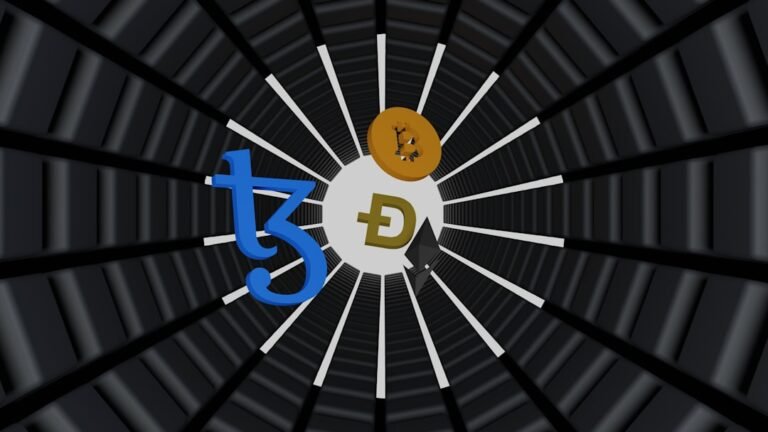
Crypto staking is a process that allows cryptocurrency holders to participate in the operations of a blockchain network by locking up their coins in a wallet to support the network’s security and operations. This mechanism is primarily associated with proof-of-stake (PoS) and its variants, where validators are chosen to create new blocks and confirm transactions based on the number of coins they hold and are willing to “stake.” Unlike traditional mining, which requires significant computational power and energy consumption, staking is a more environmentally friendly alternative that enables users to earn rewards simply by holding their assets. The concept of staking is rooted in the idea of decentralization and community participation.
By staking their coins, users contribute to the network’s integrity and security, making it more resilient against attacks. In return for their commitment, stakers receive rewards, typically in the form of additional coins. This creates a symbiotic relationship between the network and its participants, as both parties benefit from the arrangement.
As the cryptocurrency landscape evolves, staking has gained traction as a viable investment strategy, attracting both seasoned investors and newcomers alike.
Key Takeaways
- Crypto staking involves holding and locking up a certain amount of cryptocurrency to support the operations of a blockchain network and in return, earning rewards.
- The benefits of crypto staking include earning passive income, participating in network governance, and contributing to the security and decentralization of the blockchain network.
- Top coins for staking include popular cryptocurrencies such as Ethereum, Cardano, Polkadot, and Tezos, which offer staking rewards for their holders.
- Risks and considerations of crypto staking include the potential for loss of staked funds, network security risks, and the need for technical knowledge and understanding of the staking process.
- Choosing the right staking platform involves considering factors such as the reputation and security of the platform, staking rewards and fees, user interface and experience, and the supported cryptocurrencies.
Benefits of Crypto Staking
Passive Income Generation
One of the most compelling advantages of crypto staking is the potential for passive income generation. By simply holding and staking their coins, investors can earn rewards without actively trading or managing their assets. This passive income can be particularly appealing in a volatile market where trading can be risky and time-consuming.
Attractive Yields and Portfolio Growth
Many PoS networks offer annual percentage yields (APYs) that can range from 5% to over 20%, depending on the specific cryptocurrency and market conditions. This makes staking an attractive option for those looking to grow their portfolios over time. In addition to earning rewards, staking also contributes to the overall health of the blockchain network.
Enhancing Network Security and Community Building
By participating in staking, users help secure the network against malicious attacks and ensure that transactions are processed efficiently. This not only enhances the stability of the blockchain but also fosters a sense of community among stakers who share a common goal of supporting the network. Furthermore, staking can lead to increased demand for certain cryptocurrencies, as more users become interested in participating in the staking process, potentially driving up the value of the staked assets.
Top Coins for Staking

When considering which cryptocurrencies to stake, several options stand out due to their robust ecosystems and attractive staking rewards. Ethereum 2.0 is one of the most notable examples, as it transitions from a proof-of-work (PoW) model to a PoS model. With Ethereum being one of the largest and most widely used blockchains, staking ETH can yield significant rewards while contributing to the network’s scalability and sustainability.
Another popular choice for staking is Cardano (ADA), which employs a unique proof-of-stake mechanism called Ouroboros. Cardano has garnered attention for its focus on academic research and peer-reviewed development, making it a reliable option for stakers. The platform offers competitive staking rewards, and its community-driven approach encourages participation from users worldwide.
Additionally, Tezos (XTZ) has gained traction as a staking coin due to its self-amending blockchain and low barriers to entry for stakers. Tezos allows users to delegate their tokens to bakers (validators) without losing ownership, making it an accessible option for those new to staking.
Risks and Considerations
| Category | Risks and Considerations |
|---|---|
| Financial | Market volatility, economic downturns, and currency fluctuations |
| Operational | Supply chain disruptions, technology failures, and regulatory changes |
| Legal and Compliance | Lawsuits, fines, and non-compliance with regulations |
| Reputational | Public relations crises, negative media coverage, and customer dissatisfaction |
While crypto staking presents numerous benefits, it is not without its risks and considerations. One significant risk is the potential for price volatility. The value of staked assets can fluctuate dramatically, which may impact the overall returns on investment.
For example, if a staker locks up their coins during a market peak only to see prices plummet shortly thereafter, they may face substantial losses despite earning staking rewards. Therefore, it is crucial for investors to assess market conditions and consider their risk tolerance before committing to a staking strategy. Another consideration is the technical aspects of staking.
Depending on the cryptocurrency and platform chosen, users may need to navigate complex processes or maintain specific hardware or software requirements. For instance, some PoS networks require users to run their own nodes, which can be resource-intensive and may require technical expertise. Additionally, there are risks associated with smart contracts and potential vulnerabilities that could be exploited by malicious actors.
Investors should conduct thorough research on the specific staking mechanisms and platforms they intend to use to mitigate these risks effectively.
Choosing the Right Staking Platform
Selecting an appropriate staking platform is crucial for maximizing returns and ensuring a smooth staking experience. Various platforms offer different features, fees, and levels of security, making it essential for investors to evaluate their options carefully. Some popular platforms include centralized exchanges like Binance and Coinbase, which provide user-friendly interfaces and simplified staking processes.
These platforms often handle the technical aspects of staking on behalf of users, making it easier for newcomers to participate. On the other hand, decentralized platforms such as Kraken or specific DeFi protocols offer more control over staked assets but may require a deeper understanding of blockchain technology. When choosing a platform, investors should consider factors such as fees associated with staking, minimum staking amounts, lock-up periods, and the platform’s reputation within the community.
Additionally, security measures should be a top priority; platforms with robust security protocols and insurance against hacks can provide peace of mind for stakers.
Strategies for Maximizing Passive Income

To optimize returns from crypto staking, investors can employ various strategies tailored to their individual goals and risk tolerance. One effective approach is to diversify across multiple cryptocurrencies rather than concentrating all assets in a single coin. By spreading investments across different staking opportunities, investors can mitigate risks associated with price volatility while potentially benefiting from varying reward structures.
Another strategy involves actively monitoring market conditions and adjusting staking positions accordingly. For instance, if a particular cryptocurrency experiences significant price appreciation or depreciation, it may be prudent to reassess whether to continue staking or reallocate funds elsewhere. Additionally, some investors choose to compound their rewards by reinvesting earned tokens back into staking pools, thereby increasing their overall stake and potential future earnings.
Diversifying Your Staking Portfolio
Diversification is a fundamental principle in investment strategy that applies equally well to crypto staking. By holding a variety of staked assets across different networks and protocols, investors can reduce exposure to any single asset’s performance while capitalizing on multiple income streams. This approach not only helps mitigate risks associated with market fluctuations but also allows investors to take advantage of varying reward rates offered by different cryptocurrencies.
For example, an investor might choose to stake Ethereum 2.0 for its long-term growth potential while also allocating funds to Cardano or Polkadot for their competitive yields. This diversified portfolio can provide a balanced approach that combines stability with growth opportunities. Furthermore, keeping an eye on emerging projects with promising staking mechanisms can lead to early investments in potentially lucrative assets before they gain widespread adoption.
Future Trends in Crypto Staking
As the cryptocurrency landscape continues to evolve, several trends are emerging that could shape the future of crypto staking. One notable trend is the increasing adoption of decentralized finance (DeFi) platforms that integrate staking features into their ecosystems. These platforms allow users not only to stake their assets but also to engage in lending, borrowing, and yield farming simultaneously.
This convergence of services could lead to more innovative ways for investors to maximize returns while participating in various financial activities within the crypto space. Another trend is the growing emphasis on sustainability within blockchain networks. As environmental concerns surrounding traditional mining practices gain traction, many projects are exploring eco-friendly alternatives like proof-of-stake and delegated proof-of-stake models.
This shift towards greener technologies may attract more institutional investors who prioritize sustainability in their investment strategies. Additionally, regulatory developments could play a significant role in shaping the future of crypto staking as governments around the world begin to establish clearer guidelines for digital assets and their associated activities. In conclusion, crypto staking represents an exciting opportunity for investors seeking passive income while contributing to blockchain network security.
With careful consideration of risks, strategic diversification, and an eye on emerging trends, individuals can navigate this dynamic landscape effectively and potentially reap substantial rewards from their staked assets.
FAQs
What is crypto staking?
Crypto staking is the process of actively participating in transaction validation on a proof-of-stake (PoS) blockchain. In staking, users are required to hold a certain amount of coins in a designated wallet for a specified period of time to support the network and receive rewards in return.
How does crypto staking work?
In crypto staking, users lock up a certain amount of their coins as a stake in a digital wallet to support the operations of a blockchain network. By doing so, they are able to validate transactions and create new blocks on the blockchain. In return for their participation, stakers receive rewards in the form of additional coins.
What are the benefits of crypto staking?
The benefits of crypto staking include the ability to earn passive income in the form of staking rewards, support the security and operations of a blockchain network, and potentially benefit from the appreciation of the staked coins.
Which coins are best for crypto staking?
Some of the popular coins for crypto staking include Ethereum (ETH), Cardano (ADA), Polkadot (DOT), and Tezos (XTZ). These coins have established staking mechanisms and offer attractive staking rewards for users. However, the best coin for staking depends on individual preferences and risk tolerance.
- DATADVRTS975 - September 10, 2025
- Understanding Credit Scores: What They Are and Why They Matter - August 25, 2025
- The Impact of Credit Rating Agencies on Market Confidence and Systemic Risk - August 16, 2025
